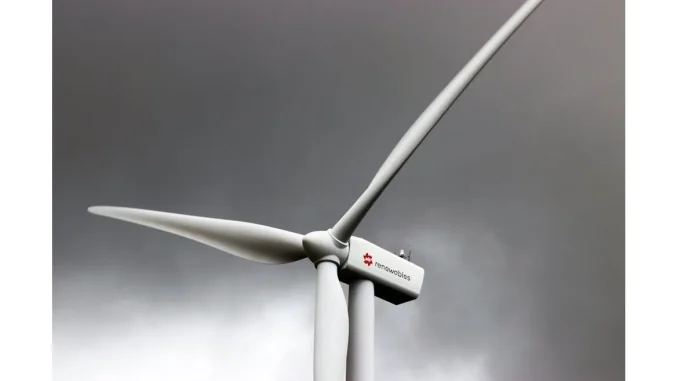
The United Kingdom’s legislative commitment to achieving net-zero emissions by 2050 is a bipartisan objective, championed by both the Conservative and Labour parties. However, the strategies proposed to reach this milestone vary significantly, reflecting their differing philosophies on governance, investment, and climate action. This in-depth comparative analysis examines the distinct approaches of the two major political forces, focusing on plans for clean energy transition, network infrastructure, hydrogen and carbon capture, nuclear power, and electric vehicles.
Prime Minister Rishi Sunak’s Conservative Party has moderated the ambitious climate policies of previous Tory leaders, opting for a more pragmatic approach. While committed to the 2050 net-zero target, the Conservatives have scaled back some initiatives. For example, they propose to triple offshore wind capacity to 42GW, a reduction from the current government’s objective of 50GW by 2030. “We need to be realistic about what we can achieve,” a senior Conservative official stated, emphasising practicality over ambition. Conversely, Labour’s manifesto under Keir Starmer is a clarion call for rapid and transformative change. Labour aims to generate all UK electricity from clean energy by 2030, well ahead of the current government’s target. This ambitious plan includes doubling onshore wind capacity to 35GW, tripling solar power to 50GW, and quadrupling offshore wind to 55GW by 2030. “Our focus is on creating a sustainable future that doesn’t compromise on ambition,” a Labour spokesperson stated.
Labour also proposes the creation of a publicly-owned entity, Great British Energy, to drive these changes, funded by windfall taxes on oil and gas companies. However, questions arise about the sufficiency of the £5 billion annual investment, primarily sourced from responsible borrowing. In contrast, the Conservatives plan to invest in expanding nuclear power and clean gas while cautiously approaching onshore wind and solar projects, insisting on local community consent and adherence to updated planning laws.
Both parties recognise the lengthy grid connection times as a significant barrier to clean energy deployment. The Conservatives plan to build on recommendations from the UK’s first Electricity Networks Commissioner, Nick Winsor, to reduce grid connection wait times. Labour’s Energy Independence Act promises an overhaul of national transmission infrastructure but lacks detailed proposals. Planning reforms are another area where both parties suggest changes. The Conservatives pledge to cut the approval time for major projects from four years to one year and halve the time for new nuclear projects. Labour, on the other hand, aims to update national planning policies and foster innovation, although specifics remain vague.
Hydrogen and carbon capture and storage (CCS) feature prominently in both manifestos, but with differing levels of commitment. Labour promises £1 billion for CCS and £500 million for green hydrogen production, part of the £7.3 billion National Wealth Fund. The Conservatives reaffirm their commitment to existing CCS policies, promising to build two already-announced CCS clusters in North Wales and the North West of England, with £1.1 billion for the Green Industries Growth Accelerator. Nuclear power is another critical component of the Conservatives’ energy strategy. Their Civil Nuclear Roadmap aims for 24GW of nuclear power by 2050, including the delivery of Sizewell C and Hinkley Point C. The manifesto also pledges to approve two fleets of Small Modular Reactors (SMRs) within the first 100 days of the next Parliament. Labour’s plan aligns with the Civil Nuclear Roadmap but includes extending the life of existing plants and establishing a National Infrastructure and Service Transformation Authority.
Electric vehicles (EVs) present another point of divergence. Sunak’s decision to delay the ban on new petrol and diesel cars to 2035 contrasts with Labour’s commitment to revert to the 2030 deadline. Labour and the Liberal Democrats also advocate for accelerated charging infrastructure roll-out, but specifics remain scant. The contrasting approaches of the Conservative and Labour parties highlight a broader debate on the pace and scope of the UK’s energy transition. The Conservatives’ cautious yet steady approach contrasts with Labour’s ambitious, rapid transformation. While both parties agree on the net-zero target, their strategies reflect differing philosophies on government intervention, investment, and the role of public versus private sectors.
Labour’s bold targets and public ownership proposals signal a more interventionist stance, whereas the Conservatives favour incremental progress and private sector-driven solutions. This divergence underscores the broader ideological differences shaping the UK’s climate and energy policies. Looking ahead, the UK’s path to net-zero will likely involve a combination of both parties’ strategies, influenced by electoral outcomes. Should Labour gain power, one can expect a rapid acceleration in renewable energy projects and public investment in clean energy infrastructure. However, the feasibility of their ambitious targets will hinge on securing adequate funding and overcoming implementation challenges. Conversely, a Conservative victory would maintain a steady, albeit slower, progression towards net-zero, with a focus on nuclear power and offshore wind. The emphasis on local consent for onshore projects may slow down deployment but ensure community buy-in. Both parties’ recognition of the need for grid infrastructure upgrades and planning reforms suggests these areas will see significant developments, regardless of the election outcome.
The future of hydrogen and CCS will depend on technological advancements and market dynamics. Labour’s substantial investments could drive innovation, while the Conservatives’ continuation of existing policies may provide stability and incremental progress. Electric vehicle policies will likely see continued evolution, driven by technological advances and consumer demand, with both parties needing to address charging infrastructure comprehensively. The UK’s journey to net-zero by 2050 will be shaped by a complex interplay of political, economic, and technological factors, with the next five years being pivotal in setting the course. The strategies outlined by the Conservative and Labour parties offer differing visions for the UK’s sustainable future, each with its own merits and challenges. Regardless of which path is taken, the commitment to a cleaner, greener future remains a shared goal, promising significant developments and transformations in the years to come.


Be the first to comment